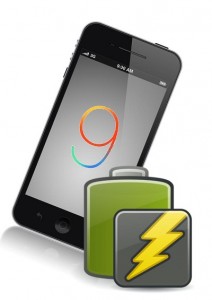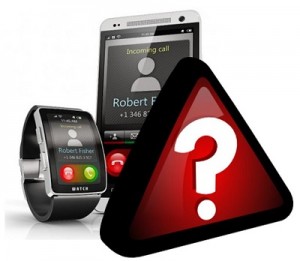The struggles with demands for more time for every charge is forcing owners to have to make a choice.
The latest generations of the iPhone have been including an ever larger number of fancy features and capabilities, beyond the reach of the battery life to keep up in a way that consumers find to be ideal.
Now the iOS 9 could give iPhone users the choice to sacrifice some performance for a longer lasting device.
The idea behind the new Low Power mode in the iOS 9 upgrade is that battery life can be saved while using the features of the device, instead of having to stick to Airplane Mode or scramble to plug the device into a wall outlet. The drawback is that in exchange for the added juice, it compromises some of the device performance. These may not involve hugely important parts of performance, but it means that things will run more slowly and the picture won’t be at its top level.
That said, the changes will allow a user to keep their battery life going for up to 3 more hours.
 This is the first time that Apple has made a move like this. The Low Power mode will shut down the background activity and decrease the performance to help to squeeze up to three more hours out of the smartphone battery.
This is the first time that Apple has made a move like this. The Low Power mode will shut down the background activity and decrease the performance to help to squeeze up to three more hours out of the smartphone battery.
According to a number of leading tech rumor sites, such as Geekbench 3 and MacRumors when running the beta of iOS 9 on the iPhone 6 Plus, the single core processor test score was 1606 and the multicore test received 2897. That said, when running Low Power mode, the figures reduced by about 40 percent, bringing them to 1019 and 1751, respectively. The notes that were taken seemed to imply that it brings the speed of the device back to the days of the iPhone 5S, but that when it is between using your mobile device at a reduced speed or not using it at all, it is an easy choice.
Overall, it is more than likely that the up to three hours will be helpful, but that portable phone chargers will continue to be the key to the kind of battery life that iPhone users want. After all, the reason that many people purchased those devices, in the first place, is for their performance!
The Apple Watch was seen by many as the hope for the wearables sector’s future, but will it be enough?
There was a massive amount of hype before the release of the Apple Watch not only because it would be the next device from the iPhone maker, but also because many people saw the company’s entry into the market as the future of the wearable technology sector.
Now, the device has been out for a while and predictions have been diverging regarding its influence.
It is certain that the sales of those devices have been strong, and it has drawn wearable technology into the spotlight so that even people who had never heard of a smartwatch before have frequently heard of one, now. But at the same time, the majority of people still haven’t actually seen these wearables in real life. Aside from fitness trackers, most people haven’t actually experienced the use of smartwatches or smartglasses, nor have they seen them on anyone else. So analysts have been coming up with their predictions about the growth of the sector, and it seems that no two are quite alike.
The wearable technology sector is still learning about what consumers actually want from these devices.
 Among the primary complaints that had arisen about smartwatches – well before the release of the Apple Watch – was that many of them were very chunky and were not very appealing. Very few people were interested in wearing something that made them look like an extra in a made for TV sci-fi movie.
Among the primary complaints that had arisen about smartwatches – well before the release of the Apple Watch – was that many of them were very chunky and were not very appealing. Very few people were interested in wearing something that made them look like an extra in a made for TV sci-fi movie.
The offerings have smoothed out a little bit, particularly as many wearables companies have partnered up with fashion designers in order to help to make sure that consumers would feel that the devices that they had to be offer would be something that would be worth wearing. However, there have been several other issues in terms of performance that have arisen and those still have yet to be addressed.
For instance, many consumers feel that the battery life of wearables is too short. The majority of devices that are currently being sold have an average one day battery life. While it may be convenient to plug in a smartphone overnight in order to recharge it, this becomes inconvenient for smartwatch wearers as their gadgets often involve features that track their sleep.
If they have to take the wearable technology devices off, then they lose the ability to benefit from that feature. This could lead to an albeit temporary trend of using the devices overnight, but recharging them during the daytime with portable battery chargers that can be plugged in and slipped into a pocket.
 This is the first time that Apple has made a move like this. The Low Power mode will shut down the background activity and decrease the performance to help to squeeze up to three more hours out of the smartphone battery.
This is the first time that Apple has made a move like this. The Low Power mode will shut down the background activity and decrease the performance to help to squeeze up to three more hours out of the smartphone battery.
 Among the primary complaints that had arisen about smartwatches – well before the release of the Apple Watch – was that many of them were very chunky and were not very appealing. Very few people were interested in wearing something that made them look like an extra in a made for TV sci-fi movie.
Among the primary complaints that had arisen about smartwatches – well before the release of the Apple Watch – was that many of them were very chunky and were not very appealing. Very few people were interested in wearing something that made them look like an extra in a made for TV sci-fi movie.